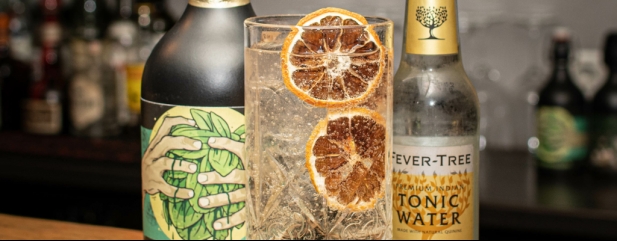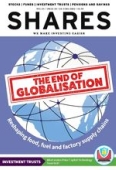Archived article
Please note that tax, investment, pension and ISA rules can change and the information and any views contained in this article may now be inaccurate.
Fevertree is well positioned to maintain and grow its market leading position

This is final article in a three-part series looking at how to find and analyse growth stocks. We look at the valuation and competitive strengths and weaknesses of our chosen UK-listed company.
This is the concluding part of the series on how to find and analyse growth stocks. It is focused on identifying competitive strengths and weaknesses as well as valuation.
As a reminder, in part one we looked at how to identify quality growth companies, while in part two we narrowed the UK share universe down to around 30 interesting growth stock candidates. From that list we chose to look at beverages group Fevertree Drinks (FEVR:AIM).
In a fast-changing world, staying ahead of the competition is an important part of delivering sustainable profit growth for shareholders.
In this article we discuss the competitive landscape in which Fevertree operates to identify strengths and weaknesses. Finally, we look at the valuation of the shares.
As we have previously highlighted, paying the wrong price can be very costly while finding undervalued growth can be richly rewarding.
FIRST-MOVER ADVANTAGE
Fevertree has built a formidable market position in premium mixers across several markets within a relatively short space of time.
Earlier in 2022, it was voted the world’s number one best-selling premium mixer brand as well as the top trending mixer for the eighth consecutive year according to Drinks International.
Exploiting its first-mover advantage the company has driven growth in premium mixer drinks. This has allowed the firm to build strong relationships with spirits companies as well as drinks distributors.
Helping spirits brands grow sales of higher margin premium products to customers as a long-mixed drink is a key focus for the company.
The strategy is to co-promote the drink and the mixer. For example, in 2021 Fevertree entered a strategic partnership with Smirnoff called ‘Spritz Up’ designed to co-promote products.
QUALITY MATTERS
Another key strength is the firm’s relentless focus on sourcing the best quality ingredients from around the globe. Provenance has become an important driver of customer preferences.
The company has forged long-term partnerships with key suppliers which differentiates its products from mass-market competitors.
The direct sourcing model and premium packaging (the company does not use plastic bottles) supports the product’s quality image and builds brand value.
SCALEABLE OPERATIONS
The company operates a largely outsourced operating model which is supported by strong relationships with importers, ingredient suppliers, bottlers and spirits companies.
This capital-light approach has allowed Fevertree to grow the business relatively quickly while also increasing operational flexibility.
As its footprint of outsourced production and manufacturing with partners expands across the UK, Europe and the US, the company anticipates benefiting from greater efficiencies and improved margins.
INNOVATION
The final piece of the competitive jigsaw which helps drive growth is the firm’s deep pipeline of innovative products.
The company sees an opportunity to extend flavours and formats to reflect different taste preferences across the globe.
In 2021 Fevertree launched a sparkling pink grapefruit soda in the US, positioned to be mixed with tequila or vodka.
Made with hand-picked Florida grapefruits and only containing 30 calories per 200 millilitre bottle, it has no artificial colours, flavours, ingredients or sweeteners.
It became the most successful launch for Fevertree in the US market to date.
THREATS
The macro economic environment has changed dramatically in the last few months with interest rates increasing to counter surging inflation.
There is a risk that money-pinched consumers decide to trade down in a tougher economic environment. After all, Fevertree is four times more expensive than own-label alternatives and twice the price of Schweppes.
Investment bank Berenberg believes the threat from trading down is overplayed. Its research highlights that Fevertree is relatively inexpensive as it only makes up between 20% and 30% of the cost of a gin and tonic.
More importantly, argues Berenberg, in the event of a demand slowdown the company’s outsourced business model means it is less likely to be impacted by negative operating effects than peers.
Companies with a higher proportion of fixed operating costs are more vulnerable to a fall in revenue because there is less flexibility to cut costs.
VALUATION
Valuation is not an exact science and the rating or PE (price to earnings) ratio applied by the market can move up or down depending on the general mood as well as fundamentals.
There was a lot of investor excitement when Fevertree listed on the London Stock Exchange in 2014 due to the strong growth it had achieved and was expected to deliver in the future.
Investors were willing to pay over 100 times earnings. That paid off as net profit grew from £1.3 million in 2014 to £61.8 million in 2018.
Those lucky or smart enough to buy the shares when it joined the stock market would have booked a 25-fold return if they held to the peak in September 2018 when the PE ratio was still a staggering 97.
Today the shares trade on a trailing PE of 35.6 and a one-year forward PE of 34.6.
That means the PE has dropped by 63% while the shares are also 63% below their peak. Analysts forecast net profit to reach £46.2 million by the end of 2022.
The closure of hospitality during the pandemic means the numbers from 2019 to 2022 do not reflect the underlying growth potential of the business.
WHAT IS THE RIGHT PE?
There are several different approaches and valuation models an investor might consider in valuing the shares.
A simple approach is to look at the average PE. Liberum has calculated the 10-year average PE for Fevertree is 48 which makes the current 35 figure look attractive.
Shares has taken the franchise factor model approach. The key determinants are the growth rate in earnings and return on equity (or ROE for short). The higher they are, the higher the justifiable PE.
Liberum forecasts earnings to grow 14% a year over the next three years, helped by some margin expansion.
Plugging in 14% growth and 20% ROE suggests the fair value PE is around 30 times, making the shares slightly more expensive than they should be in theory, using our reasoning.
However, even if the PE falls back to 30 over time, the potential 14% a year growth in earnings should translate into at least double-digit compound annual growth in shareholder returns.
Prudent investors might prefer to wait for the PE to fall further, but that is a judgement call for each individual investor.
In principle Fevertree meets our original objective of a company which has the potential to deliver at least 10% earnings growth. The competitive strengths of the business suggest it can maintain a higher than average return on equity.
Important information:
These articles are provided by Shares magazine which is published by AJ Bell Media, a part of AJ Bell. Shares is not written by AJ Bell.
Shares is provided for your general information and use and is not a personal recommendation to invest. It is not intended to be relied upon by you in making or not making any investment decisions. The investments referred to in these articles will not be suitable for all investors. If in doubt please seek appropriate independent financial advice.
Investors acting on the information in these articles do so at their own risk and AJ Bell Media and its staff do not accept liability for losses suffered by investors as a result of their investment decisions.
Issue contents
Feature
Great Ideas
Investment Trusts
News
- Apple aims to arrest sagging share price as new product launch rumours swirl
- Investment trusts prove to be key sources of dividends
- The earnings downgrade cycle has only just begun, suggesting more pain ahead
- Copper has entered a bear market and history tells us it’s not a good sign
- Why stock markets are taking Russia's debt default in their stride

 magazine
magazine








